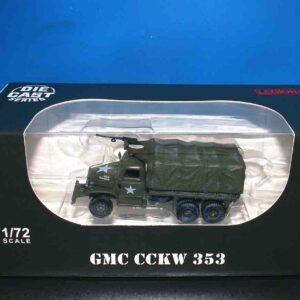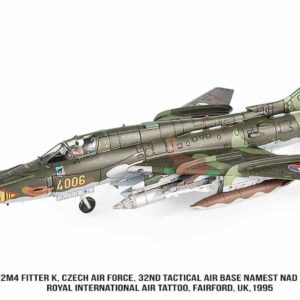Dragon Wings – North American X-15 , No3 ‘Little Joe The II’ USAF / NASA
699 Kč
Není skladem
Výrobce: DragonMěřítko: 1:144Popis
- sběratelský model letadla North American X-15 1/144 - provedení:kovový model s plastovými částmi - model je v kvalitním provedení - součástí balení je stojánek
North American X-15
North American X-15 byl experimentální raketový letoun vyvinutý pro NASA. X-15 dosáhl rychlostní a výškové rekordy počátkem 60. let 20. století. V současné době drží světový rychlostní rekord nejvyšší dosažené rychlosti pilotovaného stroje, jeho hodnota byla 6 Machů.Třináct letů tohoto letounu dosáhlo okraje vesmíru, letoun přispěl svými informacemi ke konstrukci letadel a vesmírných lodí.
The North American X-15 was a hypersonic rocket-powered aircraft operated by the United States Air Force and the National Aeronautics and Space Administration as part of the X-plane series of experimental aircraft. The X-15 set speed and altitude records in the 1960s, reaching the edge of outer space and returning with valuable data used in aircraft and spacecraft design. The X-15’s official world record for the highest speed ever recorded by a manned, powered aircraft, set in October 1967 when William J. Knight flew Mach 6.70 at 102,100 feet (31,120 m), a speed of 4,520 miles per hour (7,274 km/h; 2,021 m/s), has remained unbroken as of 2019.
| Role | Experimental high-speed rocket-powered research aircraft |
|---|---|
| Manufacturer | North American Aviation |
| First flight | 8 June 1959 |
| Introduction | 17 September 1959 |
| Retired | December 1968 |
| Primary users | United States Air Force NASA |
| Number built | 3 |
General characteristics
- Crew: one
- Length: 50 ft 9 in (15.45 m)
- Wingspan: 22 ft 4 in (6.8 m)
- Height: 13 ft 6 in (4.12 m)
- Wing area: 200 ft2 (18.6 m2)
- Empty weight: 14,600 lb (6,620 kg)
- Loaded weight: 34,000 lb (15,420 kg)
- Max. takeoff weight: 34,000 lb (15,420 kg)
- Powerplant: 1 × Reaction Motors XLR99-RM-2 liquid propellant rocket engine, 70,400 lbf at 30 km (313 kN)
Performance
- Maximum speed: 4,520 mph (7,274 km/h)
- Range: 280 mi (450 km)
- Service ceiling: 67 mi (108 km, 354,330 ft)
- Rate of climb: 60,000 ft/min (18,288 m/min)
- Wing loading: 170 lb/ft2 (829 kg/m2)
- Thrust/weight: 2.07








